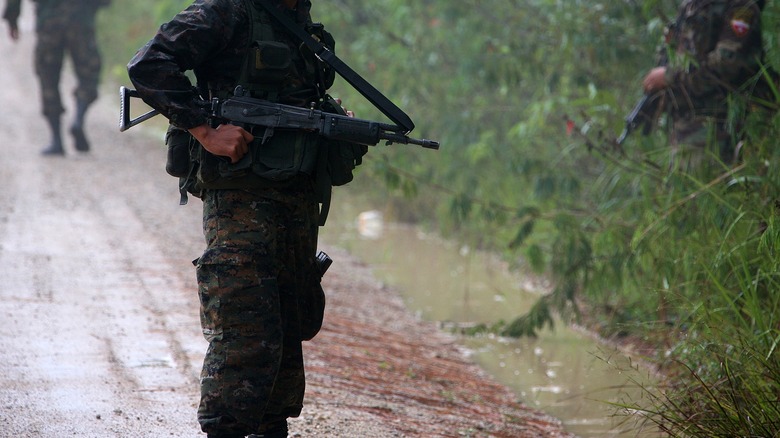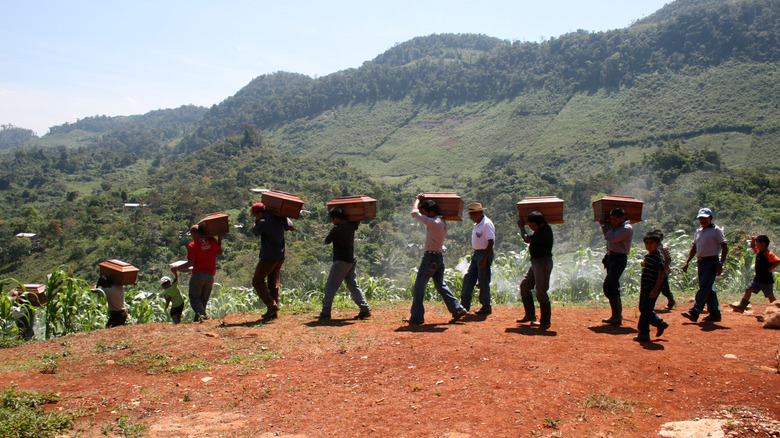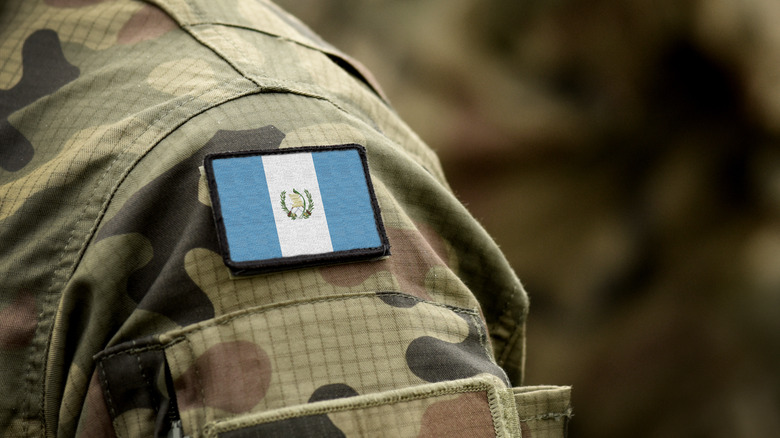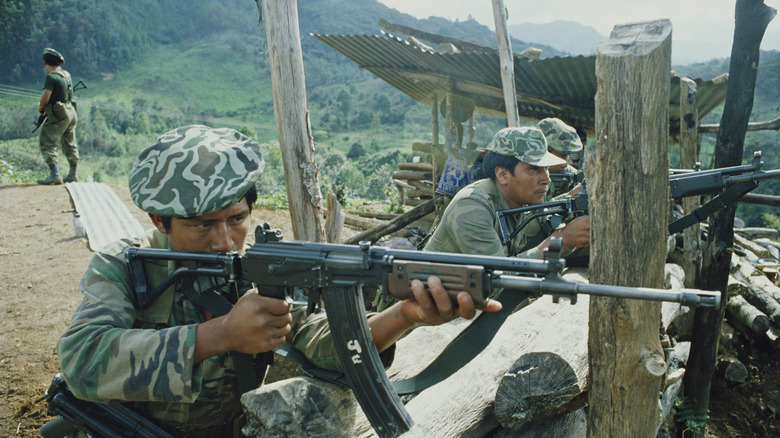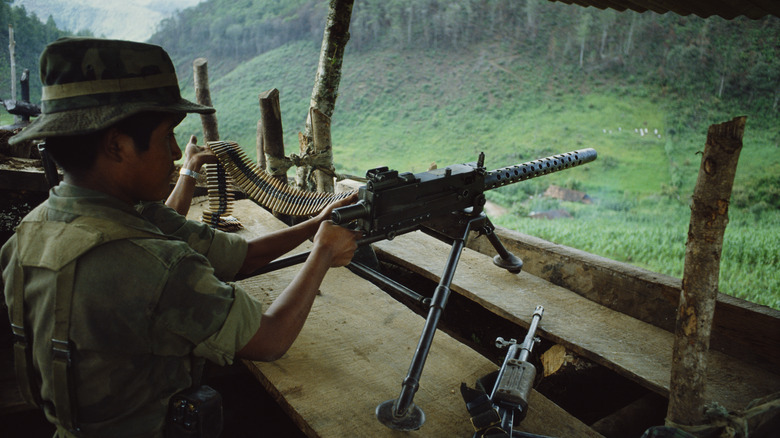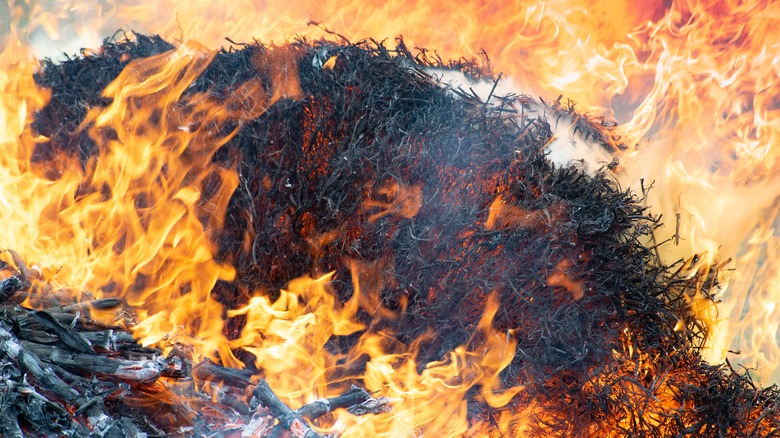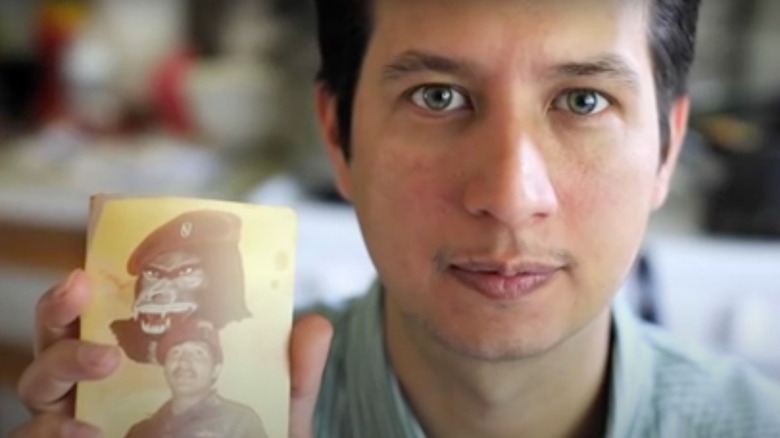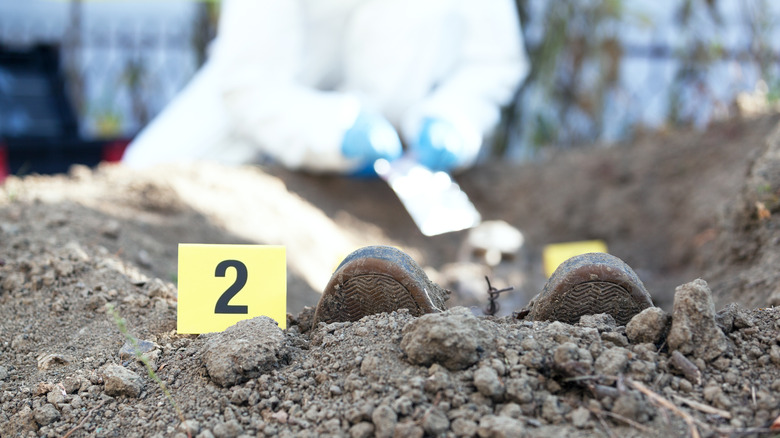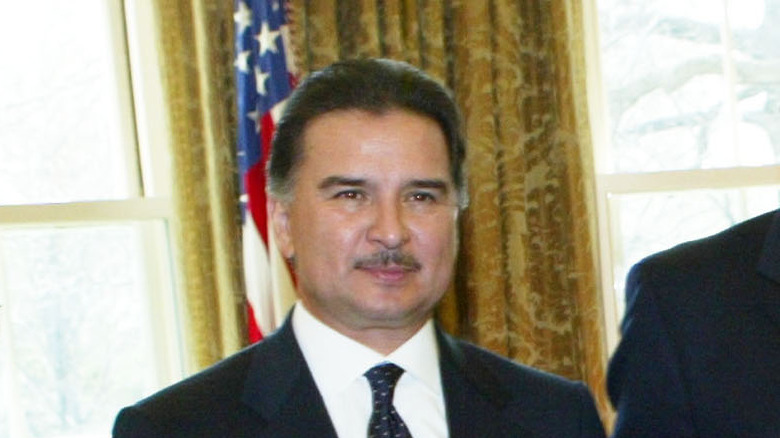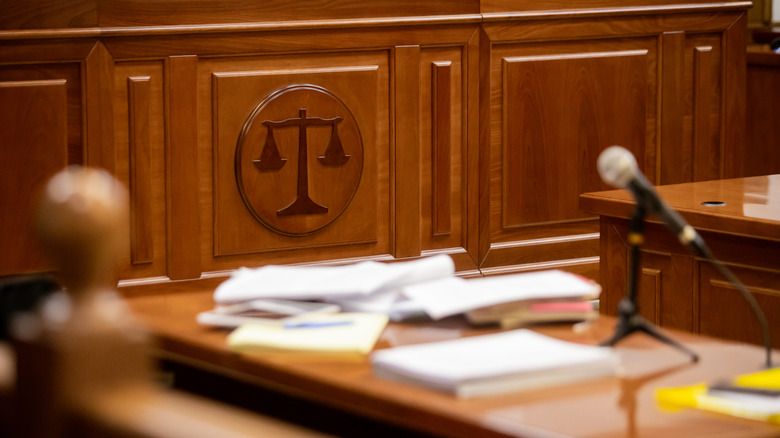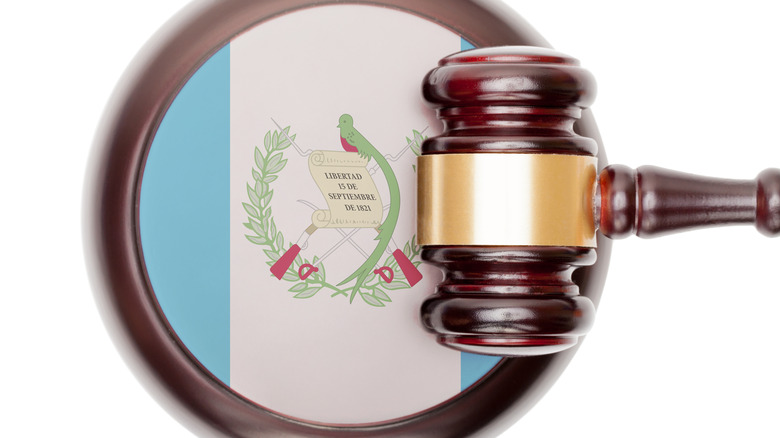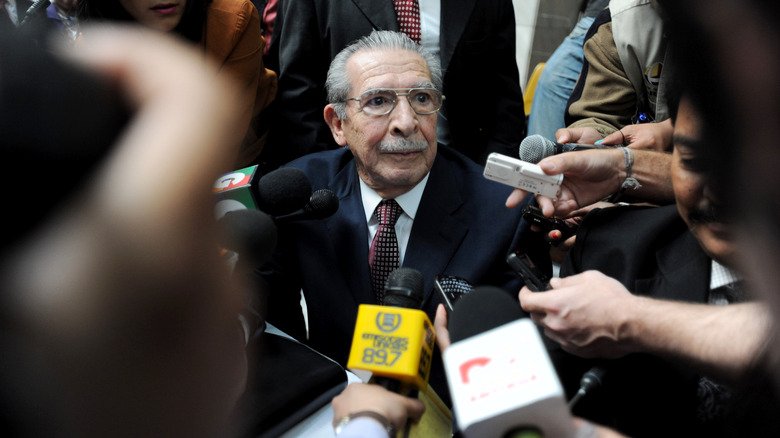Chilling Details From The Dos Erres Massacre
The community of people living at Las Dos Erres had no warning before the military death squad came to their doors in the middle of the night. And then, over the course of four days, an entire village was wiped off the face of the Earth. For years, the Guatemalan government and army maintained that the villagers had been killed by guerrillas and rebels, likely caught in the crossfire of the civil war that was raging across the country at the time. But even back then, many knew the reality of the horrific events that had occurred in 1982.
It took over 10 years for some of the victims of the massacre to be laid to rest and it took almost 20 for official recognition of the tragedy. But while justice is slowly being served, and many argue whether or not it actually is, families of the massacred are still irrevocably haunted by what they came across. José León Granados Juárez was barely over 20 years old when he discovered the bodies of his father and his uncle and for the following 30 years, "that gruesome image has chased him." These are some chilling details from the Dos Erres massacre.
This article includes references to brutal violence and rape. If you or anyone you know has been a victim of sexual assault, help is available. Visit the Rape, Abuse & Incest National Network website or contact RAINN's National Helpline at 1-800-656-HOPE (4673).
The Guatemalan Civil War
The Guatemalan Civil War began in 1960, six years after the CIA overthrew the Guatemalan government in a coup d'état and installed Carlos Castillo Armas as the head of a military dictatorship. After the coup, Armas reversed agrarian reforms while detaining and murdering peasants, labor activists, and leftist intellectuals until his assassination in 1957, according to ThoughtCo.
After Armas's assassination, the military continued to rule, led by General Miguel Ydígoras Fuentes. In 1960, World Without Genocide writes that a group of left-wing military officers led a revolt against the Fuentes government, but this revolt failed and started a civil war that would last 36 years. And as the Guatemalan government fought against guerilla groups to maintain power, their repression escalated throughout the 1960s and 1970s through the use of death squads, according to "Quiet Genocide" by Etelle Higonnet.
Civilian rule was briefly restored in 1966 as a puppet for the military until General José Efraín Ríos Montt seized power in another military coup in 1982. In "Latin American Politics," Eduardo Alemán writes that Montt "escalate[d] the repression to unprecedented levels." Targeting Indigenous Maya people, known as the Maya Genocide, entire villages were massacred while assassinations and disappearances peaked in 1982. The CJA writes that over 200,000 Guatemalans were killed or disappeared during the civil war, 83% of whom were indigenous Maya people. The military knew this wave of repression as the campaign plan "Victory 82," which ordered the annihilation of subversives.
Revenge for an ambush
In September 1982, Guatemalan soldiers confronted members of the Fuerzas Armadas Rebeldes (FAR) rebel group in the town of Las Cruces, in the northern Petén department of Guatemala. As a result, the military commissioner organized a Civil Defense Patrol in the neighboring village of Las Dos Erres, which was meant to patrol both the Las Dos Erres and the Las Cruces regions, according to The Loyola of Los Angeles International and Comparative Law Review (ILR). However, members of the Las Dos Erres reportedly stated that they would only assist with the patrol in their own community, which led the military commissioner to suspect that they were members of the FAR.
The Center for Justice & Accountability writes that in October 1982, a group of FAR ambushed an army convoy near Las Cruces and killed 21 soldiers in addition to taking 19-21 rifles. And with the Las Dos Erres community already under suspicion, the Guatemalan army decided that they were responsible. In an act of revenge, they deployed the Kaibiles, a special counterinsurgency force, to the Las Dos Erres community.
According to ProPublica, the initial goal of the mission was to recover the rifles that the guerrillas had stolen. However, if this was truly the case, the mission failed quickly.
Descending upon Dos Erres
The Kaibiles reportedly dressed up as guerrilleros because they were told that it would confuse the Las Dos Erres community and they would "think that it wasn't the Army committing the killings, but the subversives."
On the night of December 5, 1982, 58 Kaibiles left the military base in Santa Elena, Petén, and headed towards Las Dos Erres. They reached Las Dos Erres in the early hours of the morning of December 6 and began removing people from their homes. ILR writes that the Kaibiles locked the men in the school while the women and children were locked in the Evangelical church. In the school, the Kaibiles proceeded to interrogate and beat the men one by one. According to "Memory of Silence," edited by Daniel Rothenberg, the soldiers didn't find out any information about the FAR during the interrogations and found no weapons or propaganda after searching every home.
After consulting with their superiors, the patrol leader informed the group that they were going to "vaccinate" the members of the Las Dos Erres after breakfast, which was the signal to start the killings. The massacre began at 2 in the afternoon, when an infant was thrown into a dry well and all the other young children were executed.
Days of slaughter
The Kaibiles continued their executions of the older members of the community, asking them if they were part of the FAR and who was the head guerrilla in the village before killing them. "Memory of Silence" writes that all the victims' bodies were thrown into a nearby well. The following day, the indiscriminate killings continued and during the nights, the soldiers raped the women and girls who were still alive in addition to those "that they had divided among themselves." ILR writes that pregnant people were also beaten and abused and many suffered miscarriages as a result.
By the morning of December 8, all of the remaining inhabitants of Las Dos Erres had been slaughtered. And as the Kaibiles were beginning to leave, six families more happened to arrive at the scene of the crime, having been coincidentally away during the massacre. Finding that the well was now full, the Kaibiles decided to instead take them to the mountain and shoot them there, leaving their bodies on the ground. Two girls were taken alive by the Kaibiles when they left Las Dos Erres, and were sexually assaulted for several days before being murdered as well.
At least 251 people were killed in the massacre at Las Dos Erres. The Guatemala Human Rights Commission writes that the number may be as high as 300. It's estimated that at least 120 of those murdered at Las Dos Erres were Maya.
The official version
On December 8, residents of Las Cruces got to Las Dos Erres and found evidence of the slaughter. However, the commander of the military detachment at Las Cruces had orders for the village to be burned to the ground after any useful objects are scavenged. Three days after leaving Las Dos Erres, the Kaibiles also murdered the guide who'd led them to Las Dos Erres, according to ILR, effectively to not leave any witnesses alive.
In the days following the massacre, military officials near Las Dos Erres claimed that FAR forces had attacked the village and taken its residents into the jungle. The story reached Canadian and American diplomats who even decided to go on a fact-finding inquiry two weeks after the massacre. CBC reports that the diplomats flew over the area with a U.S. military attaché and noted that "seven to eight houses had been put to torch." There were also no residents to be found, and people in nearby villages "were slightly evasive."
However, the report merely contends that it's "odd" that there hadn't been any news of the Las Dos Erres inhabitants for two weeks. ProPublica reports that the cable from the American diplomats was significantly blunter, stating that "the party most likely responsible for this incident is the Guatemalan Army." But despite coming to this conclusion, the United States continued to support the Guatemalan government and kept its opinion regarding the massacre secret until 1998.
Three survivors
Despite the scorched earth policy of the Kaibiles, three young children managed to remain alive after the massacre: 5-year-old Ramiro Cristales, 11-year-old Salome Armando Hernández, and 3-year-old Oscar Alfredo Ramírez Castañeda. Hernández managed to escape the Kaibiles as they escorted some villagers away to be murdered in the mountains, while ProPublica writes that Cristales and Castañeda were abducted by the Kaibiles.
Cristales was raised by Santos López Alonzo, the baker for the attack squad, who would often attack the boy in a drunken rage and make him work 17-hour days on the family farm, according to CBC News. Cristales ended up joining the army when he was 19 and remained in it for two years, until the truth about his past was finally revealed to him. Fearing that Cristales wouldn't be safe staying in Guatemala, as the living survivor of a massacre that the army sought to erase, and after briefly being reunited with family he didn't know he had, Cristales was given asylum in Canada. International Justice Monitor writes that Cristales later testified against López and López's family about the physical and emotional abuse he suffered at their hands.
Meanwhile, Castañeda was taken by Lt. Oscar Ovidio Ramírez Ramos, one of the Kaibiles who led the attack. Although Ramírez died within a few months, Castañeda was raised by Ramírez's family and didn't learn about his true identity until he was in his 30s.
Exhumations
The events of Las Dos Erres remained largely out of the public eye until June 1994, when the Association of Relatives of the Detained and Disappeared of Guatemala (FAMDEGUA) filed a criminal complaint about the Dos Erres massacre. One month later, the exhumations at Las Dos Erres began at one of the wells where they knew the bodies were thrown, known as El Pozo. According to Amnesty International, after 16 days the bodies of 10 people were found, all of whom had gunshot wounds.
However, ILR writes that due to heavy rains and technical complexities involving the excavation, the exhumations were delayed by almost a full year and resumed again in May 1995 with two additional sites. The three sites for the exhumations were referred to as El Pozo, La Aguada, and Los Salazares. The bones of at least 162 people were found at El Pozo, with at least 67 of them being children younger than 12. Many showed signs of blunt force trauma as well as bullet holes in the skulls. Amnesty reports, "All the ballistic evidence they uncovered was consistent with Galil rifles having been used, a weapon which Israel has been providing to Guatemala for many years."
At La Aguada and Los Salazares, all the bones and clothing that were found were unfortunately in a severe state of deterioration due to fire. Meanwhile, those who were involved in the exhumations also frequently received death threats and their equipment was stolen at least once.
Accountability
In 2001, Guatemalan President Alfonso Portillo admitted that the government and the army were responsible for the Dos Erres massacre. According to "The Long Road to Justice" by Louisa Reynolds, 176 relatives of those killed during the massacre were also promised $1.8 million, but many relatives were left out of this reparations package. The Center for Justice & Accountability also notes that the reparations ended up only being partially paid out.
However, Guatemala's judicial system refused to further investigate the massacre or offer any more compensation to the relatives. If anything, they believed that the "compensation scheme would buy off the victims so that they would forget about seeking justice." As a result, the relatives of the victims of the Dos Erres massacre went to the Inter-American Commission on Human Rights. In 2009, the IACHR ruled that the relatives should be compensated a further $1.4 million and stipulated that Guatemala had a duty to investigate the massacre and that to not investigate the massacre was a denial of justice. As criminal proceedings were reopened, Guatemala issued arrest warrants for 17 people who were former Kaibiles, some of whom were now living overseas in the United States.
Trials in the United States
In May 2010, Gilberto Jordán was one of the first former Kaibiles to be arrested in the United States. According to The National Security Archive, he was charged with lying to the United States about his service in the Guatemalan Army, and in September 2010, he was sentenced to serve 10 years for lying on his citizenship application. In 2020, after serving his prison sentence, Jordán was deported from the United States and turned over to Guatemalan law enforcement.
In 2011, Jorge Vinicio Sosa Orantes was also arrested in Canada on charges of naturalization fraud in the United States and was extradited back to the United States. According to ProPublica, the trial against Sosa in the United States was "the first full airing of the Dos Erres case in a U.S. court." However, because U.S. prosecutors have no jurisdiction in Guatemala, they could only find him guilty of making false statements during immigration proceedings. Reuters writes that Sosa was sentenced to 10 years in prison.
Trials in Guatemala
The first trial in Guatemala to involve former Kaibiles began in July 2011 against four former soldiers, Carlos Antonio Carias, Manuel Pop Sun, Reyes Collin, and Daniel Martinez, who participated in the Dos Erres massacre. Democracy Now! reports that all four of the soldiers were sentenced to 6,060 years of prison each. The sentencing number came out to 30 years per person they killed plus another 30 years for crimes against human rights. Carias was also given an additional six years for aggravated robbery, making his sentence 6,066 years.
BBC reports that Pedro Pimentel Rios was also sentenced to 6,060 years in prison in 2012 after being extradited back to Guatemala from the United States. And after López's trial, during which massacre survivor Ramiro Cristales testified, in 2018, The New York Times reports, he was sentenced to 5,160 years in prison. Ultimately though, "the sentence[s] [are] largely symbolic as the maximum actual term is 50 years."
In 2020, a judge also ruled that there was also sufficient evidence to send Gilberto Jordán to trial for his role in the Dos Erres massacre, reports the International Justice Monitor.
Convicting the former president
In 2013, charges were also brought in Guatemala against former president General José Efraín Ríos Montt. According to "Understanding Central America" by John A. Booth, Christine J. Wade, and Thomas W. Walker, Ríos Montt was charged with genocide and crimes against humanity for his role in the Dos Erres massacre as well as the forced displacement, rape, and murder of thousands of Maya Ixil people.
On May 10, 2013, Ríos Montt was convicted of genocide and crimes against humanity. But although he was sentenced to 80 years in prison, 10 days later the Constitutional Court claimed that there had been procedural errors and after partially annulling the verdict, they ordered the original trial to resume with new closing arguments. The trial was repeatedly delayed and ultimately Ríos Montt died while under house arrest in 2018 at the age of 91, waiting for the trial to resume. However, NISGUA writes that in September 2018, a tribunal "unanimously declared that the military committed genocide against Mayan peoples from 1982-1983, essentially confirming the validity of the original decision against Ríos Montt."
Although Ríos Montt's head of military intelligence, José Mauricio Rodriguez Sanchez, was also similarly charged, he was acquitted on the same day, writes Judging a Dictator. And during the 2018 tribunal, Sánchez was found not guilty. In her dissent, Judge Sara Yoc Yoc stated, "Who determined [the Ixil people] were the enemy? Who carried out the intelligence? HE DID!"
